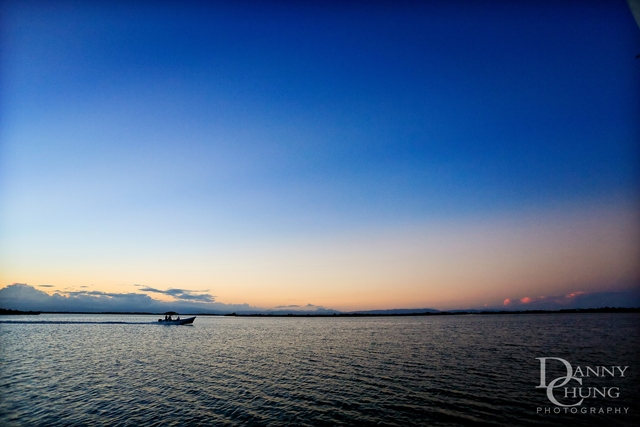
The history of Belize is an incredibly rich narrative filled with diverse cultures and people. Belize boasts one of the most multicultural environments in the world; containing such a wide variety of ethnic groups within a small geographical area. These ethnic groups include the Maya, Mestizo, Creole, Garinagu, Mennonite/Germanic, Indians and also several Asian and African groups! This diversity was largely established by a series of migrations of the different ethnic groups into Belize. These migrations still continues today and the possibility for the consolidation of new ethnic groups exists.
The area that is now known as Belize was first populated by the Maya people, who were a branch of the original Asiatic people theorized to have crossed the Bering Strait into North America about 20,000-15,000 years ago. The earliest dating of sites such as Cuello, set the beginning of Maya civilization in Belize to about 2,500 BCE, a period known as the Pre Classic period. This was then followed by the Classic period of Maya Civilization around 250-900 CE, when many of the great temples were built, which served as ceremonial centres and symbols of a strictly hierarchical society led by a king and priestly class . This era saw the rise of cities such as Caracol, Lamanai and Tikal (now situated in Guatemala). The Decline of Maya Civilization came after the Classic period where for reasons still not agreed upon by historians, major cities were abandoned and the long established systems of government were dissolved. The decline of Maya civilization is not be confused with an entire collapse as the people and their culture did carry on.
The Spanish eventually took control over the area that is now Belize in the early 16th century with the Treaty of Tordesillas. However, they did not exercise effective control over the area, which gave English and Scottish privateers, the opportunity to establish camps along the mouth of the Belize River. These camps would eventually lead to the consolidation of the settlement known as Belize Town. Initially dye wood was extracted which required little strenuous labor or skill. The discovery of Mahogany, a highly valuable hardwood which required much care and labour to extract, necessitated the need for a large working force.
African slaves were therefore brought in, in copious amounts; men made to work in Mahogany camps away from the town and women left to deal with domestic matters in the slave master's home. Generations of contact and interbreeding, led to the growth of the Creole people, an ethnic group tied together by a common pidgin language and strong African identity shaped by a British colonial environment.
British occupation of the area did not however come without consequences. Conflicts were ongoing with the Spanish colonial government over autonomy in the area. Both negotiation and battle were characteristic of the tumultuous relationship. Many incursions by the Spanish were made to uproot British privateers. These occurrences largely ceased after the Battle of St. George's Caye on September 10, 1798; an event commemorated by a national holiday every year. Curiously enough, British Honduras (as Belize was known then) wasn't declared a crown colony until 1862, a full 64 years after the battle.
The Mestizo ethnic group was one formed from the interbreeding of the indigenous Maya people and Spanish colonizers.This ethnic group has seen a steady growth in Belize, beginning in the 19th century with the migrations caused by Caste War up to late 20th century conflicts in Central America, namely the many civil wars. Today the term covers any person who is largely Hispanic (i.e. not originally from Spain)
The Garinagu are a mixture of African slaves and the indigenous Carib people, who came to Belize after being expelled by the British from the island of St Vincent. Today they reside mostly in the South of Belize and retain a very strong African identity and their own language, Garifuna, which is spoken by many in the group. Their 19th century journey to Belize is commemorated every year with a national holiday on November 19th.
With the abolition of slavery, cheap accessible labour for the ruling classes became troublesome. This lead to the establishment of Indentured labour in the mid 19thcentury, sought mainly through Chinese and Indian workers. Indentured labourers while not exactly slaves, did experience very harsh conditions; bound by contract, working incredibly long hours for little pay and under horrendous working conditions. When the period of servitude was over, many workers either moved to other parts of the country or abroad to find other ways of ascertaining a steady income. Many Chinese and Indian migrants found some wealth in establishing grocery stores, restaurants and other facilities geared towards the service industry. While a large number of individuals from these ethnic groups did make their way to Belize at this time, there since have been many waves of migration leading to the continued growth of the groups in the country.
Coming into the 20th century, many of the ethnic groups seen today in Belize were already largely established. The history of this era, especially moving towards the mid 20th century, is largely dominated by the independence movements and the push against British colonial rule. Leaders and contributors to this movement included , George Price (considered Father of the Nation), Philip Goldson (whom the international airport and the former Northern Highway is named after), Antonio Soberanis (activist in the Belizean labour movement), Cleopatra White (nurse, social worker, activist and community leader). Belize attainted self government in 1964 and was actually not official known as Belize until 1973; its actual former name being the British territory in the Bay of Honduras or just British Honduras. Due to ongoing conflicts and negotiations with Guatemala over a land claim to territory of Belize with the British Colonial government, Belize was not fully able to gain independence until September 21st, 1981. It has since maintained a constitutional monarchy with the Queen as governing figure head, the Governor General as her representative in Belize , and the prime minister and elected officials exerting the majority of the power and influence within the country, under a democratic system .
Excerpt by Rashad Ali Bohn Andrewin ~ History Major at The University of Belize









